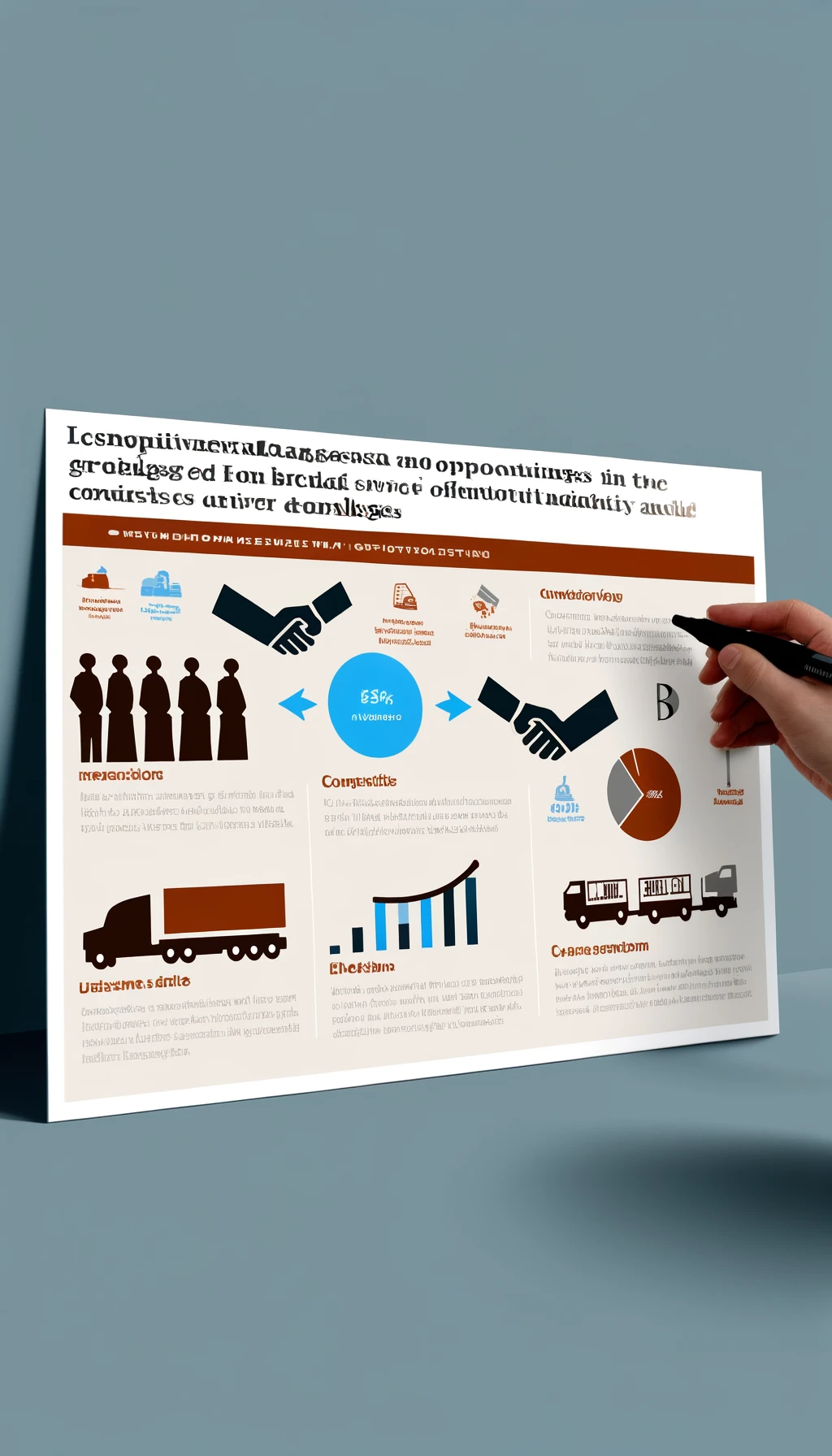Many logistics business owners and leaders have recently overlooked the importance of refining their sales and marketing strategies, focusing on evaluating what’s working and identifying areas for improvement. This oversight is particularly significant given the rapid changes in the logistics landscape, underscoring the need for continuous enhancement. This article will discuss the crucial elements logistics business owners must consider when developing their sales and marketing strategies.
Logistics Services Are Increasingly Viewed as Value-Added Services
In formulating your sales and marketing strategies, you must recognize that logistics is no longer perceived merely as a line item expense by your customers. This paradigm shift, accelerated by the expansion of e-commerce, has highlighted the importance of reliable logistics services. Issues such as late deliveries, incomplete shipments, or damaged goods have underscored the value of timely and high-quality logistics services, influencing consumer expectations and willingness to pay more for superior service. These changes are also beginning to impact B2B sectors.
Our advice: For years, some logistics business owners have viewed logistics services as purely transactional. If this is the case, this mindset will persist among such companies’ employees. The first step for such an organization is to compile statistics demonstrating logistics services’ value-added nature and instill this new perspective within their teams. Subsequently, these value propositions should be integrated into the sales and marketing processes, moving from a transactional to a more consultative approach.
Service Level Breadth
The breadth of service offerings is becoming increasingly critical, especially for intermediaries like freight forwarders, 3PLs, and 4PLs. Logistics providers must expand their service offerings with end consumers and business customers utilizing a broader array of sales channels. Moreover, business customers seek more sustainable logistics partners, especially in Europe. This shift is happening because of consumers who prefer doing business with environmentally friendly companies and the changing environmental regulations. Companies that will not pay attention to those changes risk losing customers to the competition, which will have more comprehensive service offerings because, with time, it will become easier to do business with such companies.
Our advice: If your organization operates as an intermediary, explore opportunities to broaden your service offerings across more channels and transportation modes and consider developing more sustainable services. If your organization is asset-based, focus on reducing CO2 emissions through methods such as using intermodal transportation options or sustainable fuels. Create sustainable product offerings and market them correctly.
Getting new customers will be more challenging in the years ahead.
Getting new customers has become more challenging in 2023; we expect no significant improvements this and next year (if no wild card events happen). What’s the Logic between our thoughts? Recently, there was a massive influx of logistics assets (trucks, liners) into the market, as many believed the music would not stop. Although the music has stopped, and keeping in mind that Central banks aren’t rushing to lower interest rates, there are even talks that the era of zero interest rates has ended; therefore, most likely, we will not see a fast recovery in the buying power of consumers. We aren’t saying this is a tragedy because some sectors, lanes, and logistics services are growing. But we wan’t to emphasize that more effort will be needed to succeed during those times.
Our advice: Perform a comprehensive audit of your existing sales and marketing processes. If your sales processes are undefined and your marketing efforts are lacking, now is the time to start. Aligning marketing activities with sales efforts can shorten sales cycles and facilitate faster customer acquisition. Training employees in critical sales techniques is also crucial.
New delivery and service options
The last decade has introduced us to many new transportation ways, such as drones, robots, bicycle deliveries, and new services like Shared Micro Fulfillment services. We understand this seems like an option that is not worth pursuing, but let’s not forget when we were introduced to parcel lockers. Many thought that no one would want to use them. But see what happened? Not only have they become viable, but new service offerings have also been introduced. The other development is related to control towers. Multinational companies are building control towers because of the increasing complexity of logistics operations and the need to increase services. This option is still too expensive for many smaller manufacturing and trading companies; forward-thinking logistics companies can find ways to close this gap. And let’s not forget sectors that grow fast these days, such as military-related industries, electronic components, etc.
Our advice: Stay abreast of market developments and identify opportunities to gain a competitive edge. Being an early adopter of new technologies and services can attract customers more effectively.
The Competitive Environment Is Becoming Increasingly Challenging
Recently, the sector has seen several significant mergers and acquisition deals, with the anticipated involvement of DB Schenker being a notable exception yet to materialize. Additionally, it’s essential to recognize that carriers are expanding their service offerings, contributing to a more competitive environment. These developments are likely to intensify competition within the industry.
Our Advice: The logistics industry encompasses a wide range of services, and the impact of these trends will vary. While it’s beyond the scope of this article to address every possible outcome, a fundamental approach is for each company to conduct a thorough market analysis. Analysis should include evaluating competitors, assessing your value propositions, understanding your position within the value chain, and considering how these shifts in the competitive landscape will affect your operations. Questions to consider include whether you can maintain your current pricing, how these changes will impact your revenues, profit margins, etc.
In Conclusion, the logistics industry’s landscape is evolving rapidly, making it crucial for companies to adopt a proactive stance. Suppose your organization is considering implementing some of the above-mentioned initiatives and wants external help to implement them faster and cheaper. In that case, we would like to invite you to explore how we can add value to your organization. Click the link below to schedule a non-obligatory discussion.
About the Author:
Thomas Ananjevas is a seasoned supply chain professional with 15 years of experience in purchasing and selling logistics services and building supply chains from the ground up. He founded a consulting, training, and marketing services company dedicated to the logistics industry. Thomas specializes in helping logistics companies implement necessary changes to ensure business growth and continuity. You can go ahead and schedule a conversation with Thomas by clicking hhere.



